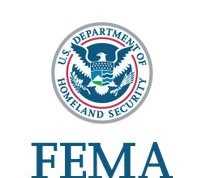A Quick Guide to Move-In and Move-Out Checklists for Rental Property Owners
Before each new tenant moves into your rental property, you’ll need to make sure everything in the residence is in good condition and works correctly. The best way to do this is with a thorough property inspection. This walk-through must be completed with the previous occupant before the new tenant moves in. That way, you can reduce your liability if there is any damage and minimize the chances of a dispute over the security deposit. An inspection is also recommended when the new renter moves in so that you can make a note of any existing damage.
The easiest way to handle inspections is with move-in and move-out checklists. They’re essential for keeping properrecords of any problems with the property. So, what do you need to know about these checklists, and what should you have on them? Let’s take a look.
The Importance of Move-In Checklists
Doing a walk-through with a checklist at the ready gives you the chance to quickly correct any problems you or the new tenant find. And by providing proof of the property’s original condition, a checklist can help you avoid being held responsible for damage caused by the tenant later on.
When you meet your new tenant on the day of the inspection, ask them to go through the checklist with you. As you walk through the property, write down any existing damage or problems on the sheet. Then, sign and date the document and have your tenant do the same. That way, everyone is protected.
What to Consider When Moving Out
When a tenant is moving out of your property, a checklist is especially critical. If the renterhas damaged something during their stay, you may be able to withhold a portion of the security deposit to cover the cost of repairs.
If you both work through the checklist together, on-site, it will be easy to see if there are issues present. At the end of the move-out inspection, you and the tenant should sign and date the document. This confirms that both parties are aware of any damages listed on the sheet, which is key to proving who is responsible.
What to Include on Move-In and Move-Out Checklists
While move-in and move-out checklists maydiffer slightly, most will contain similarelements. At the very least, each room should be on the document. Then, you should add a list of specific items within every space. For example, the living room may include walls, flooring, windows, ceilings, lights, electrical outlets, and more. Similar items will be listed for the kitchen, but you’ll also want to include appliances, sinks, countertops, and cabinets.
The more detailed your checklist is, the more comprehensiveyour liability protection will be. Plus, your tenant will see that you care about the property, which can help encourage them to take better care of it if they’re just moving in. Most importantly, a thorough checklist and inspection will ensure that your rental property – and your investment – is protected.
















